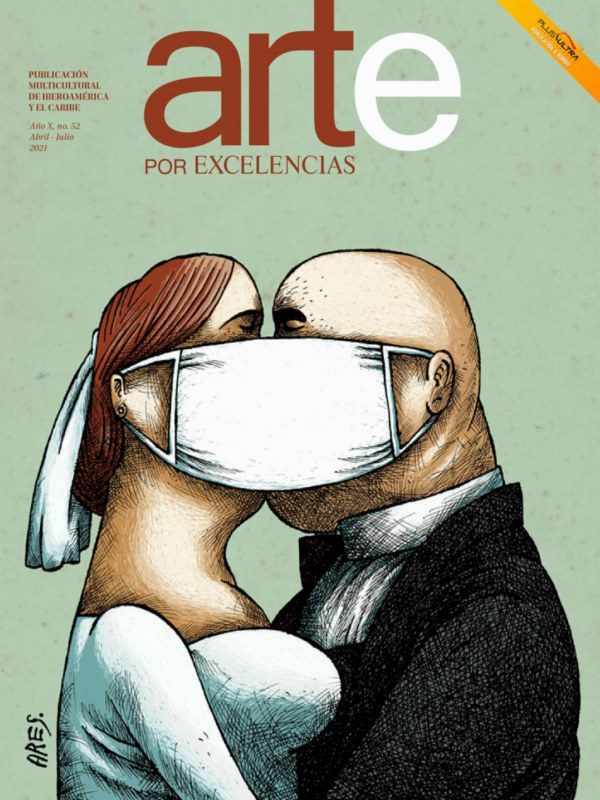Luis Gomez Armenteros occupies one of the top positions in the Cuban Vanguard Art. He has a dimension that places him between the proposals made by Juan Francisco Elso (Havana, 1956- Mexico, 1988) and, during the latest years, certain links with the poetics of Joseph Beuys (Krefeld, 1921-Düsseldorf, 1986); all with a genuine projection, full of sorrow and irony, which overflows on the healthy resource of experiment and his persistent conviction on what he does.
Despite the fact it popped up in the late 1980s, it stays away from the ruthless critic driven by Cuban art in these years by being closer to the approach of Volume I Group (1981) and by being deep down inside the individual cosmovision that singles him out.
Emotional introspection (with conceptual basis) identifies the first stage of his work, where he turns over himself and over the issues of human beings as integral part of the world. Later on, as of 1998, he will give some space to the questioning of Art and its consumption.
He reaches an unusual maturity in 1991, year of his graduation at the Higher Institute of Arts and of his first personal exhibition. During his development, Luis has been looking into drawing, sculpture, installation, photography, and video projection and even some sort of plastic arts together with some inquiries in the net, more recently.
His relationship with Elso Padilla is mostly focused on the use of materials as conveyers of a sacred load, in the way Afro-Cuban religions do, but also the energy of his symbols convinced that the importance of myths and believes resides in what we do with them and in the conjunction between human existence and Cosmic Structures.
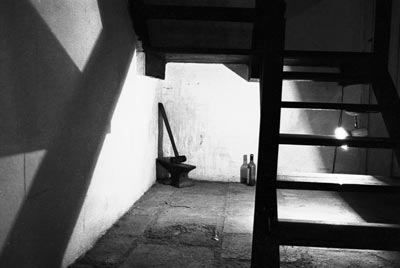
He differs from Elso in some aspects. In Luis Gomez, art is a means to apprehend the universe, to act and protect himself from all evils, from the daily drama, from pain.
He himself says: “Elso concentrated on Latin American spirituality; I am more concerned about something more comprehensive, more focused on ontology, the emphasis on the existential”.[i]
The warrior of Gomez is more focused on universal symbols; Celts, Africans, Americans, Buddhists; that is to say, coincidental codes in a holistic concept of the world. His art is conceived as experience, learning and protection where he intends to capture the soul of each single thing through the essence ant not through the anecdote. Luis will take all religious, mystical and anthrop physics elements that are in line with his personality.
The first lesson of himself can be found in his initial drawings. One year before his graduation at San Alejandro School, in 1987, there are already some icons that uncover his main interests: the cross, the mandala, the swirls, the characters with flags embedded in their bodies. They are intimate allegories shown in the series of drawings named: Nine Premonitions about the Black (1987); Similar Structures (1991); The 7 Vital Signs (1991), and Blood on Ashes (1992), where he displays an expressionist language with some abstract touch, a minimum use of resources and an obvious priority to the message. These icons will be retaken in subsequent works, sometimes exceeding the traditional support to invade, directly, the walls of the exhibition room with an impeccable coherence between the sense of the piece and its positioning; from Vision of Pain (1991) up to the anthology Close captions (2003), both shown at the Visual Arts Development Center.
Memorable Installations from the beginnings are: “Eyes that See” (1991), “The King of Pain” (1991), “The Blacksmith, the Alchemist, the Creator” (1991), “Natural Invention” (1992), “The Guardians of the Threshold” (1992), “The Secret Name of God” (1994), “The Spiritual Object” (1994) and “Love is a Temple” (1994), in which emotions and suggestions are brought to the foreground to tell us about creation as a sacrifice, about penitence and torture, love, the unspeakable, death and the privilege of knowledge, among other sublime evocations. Convinced that “you can only animate what has been created through the transmission of your own life, with blood and tears”2.[ii] This is, like all the production of these years, a tribute to Elso.
With the exhibition Quicksand (1995), he keeps the same principles, pointing to the true nature and effectiveness of knowledge and includes, for the first time, a photographic montage of Juan Carlos Alom, which announces his interest in this way of expression. (The photo of Juan Carlos was placed behind the sculpture of the same name as a complement.)
And Wisdom–another significant element of his production- is present in the group of books entitled “Bad Foundation” (1995) as a lack of confidence in a knowledge that has been academically obtained to face the problems. From this moment on, he will state it necessarily and socratically, as introspective experience in “Inner Temple” (1998), and together with the symbolic reference of the light in “Digested Sun” (1997), “Desert” (1998) and, collaterally, in other pieces.
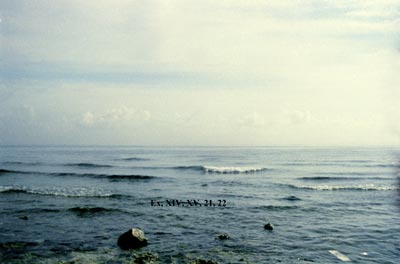
In 1996 he makes another minimal and conceptual exhibition: Power, Spirit and Fortune (Systole and Diastole), a profusion of allegories and spirituality in which he will introduce the sound as a main element of the message to be conveyed: another device that takes a prevailing position during the last stage of his subsequent works as he uses music composed by others and by himself.
Here it is about the recurrent and strong sound of a hammer that, operated by electricity, hits a metal sheet leaned on one of the walls of the room and, based on a detail from the title; it sends you through the contraction-relaxation movement of the heart muscle. With the sacred connotation of wine and the sound of the hammer hurting our temples; the sensory- now felt also through the ears- has gained the main role of this play-exhibition, in total agreement with the concepts of his statement Power, Spirit and Fortune, and with the already mentioned conviction that supported the idea of transmitting life with blood and tears as the only way to animate what has been created.
Like in (Power, Spirit and Fortune …), the tormenting sound element will show up again in his play-exhibition named Whisper (1998), which will only be in harmony with a weak drawing of a road skirted by columns, like in a tunnel that becomes narrower until you lose it in the walls of the room; like if he is trying to make us discover a secret which lays deep in our souls; another poetic cognitive distinction.
In 1998, without abandoning his “existential burden”, Luis starts to examine the essence of Art. With the piece “Quiet Room” he proposes a vision that is less in line with the migratory issues themselves, a questioning of the way to deal with these issues by many Cuban artists of the time. A whale, perfect and huge, allowed for people to get inside it, and it motivated several interpretations about the trip, through possible literary references by Jonas, Moby Dick or Pinocchio.
After this ephemeral and unforgettable installation, during 1999, he begins his approach to photography and, immediately afterwards, to video-projection.
Sensations will be then strengthened through more efficient technological resources and through music as a pure feeling to raise old obsessions, to develop some criteria about Arts and reconfirm his introspective projection.
The way, with big semi-abstract pictures entitled A Thousand Days of Rain, created that year and placed in one room of the Contemporary Art Center “Wifredo Lam” in Havana, in 2000, he shows the nostalgia that overwhelms the artist at that moment; his leaves aside the work with materials and opens the doors to video.
His yearning is made concrete again in the fragment of a song and he delivers this suggesting group linking the interests he had expressed since 1995; that is to say, photography seen as a different reality: inner reality.
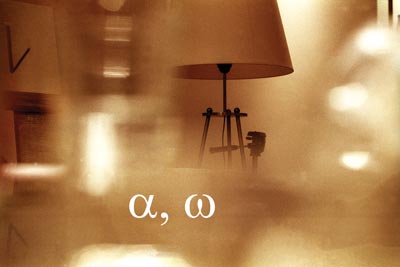
With the series A Thousand Days… his inquiry about Arts is much more specific, a search that will turn progressively turn bitter as he discovers certain resources and realities in “Lonely Life”(2005), Dead Letter (2008), “Gestalt” (2008), “Caucasian” (2009) and “Non site” (2010) and actions and exhibitions like Jargon (2005), which strengthen his Bayesian concept about creativity as a redefinition of the old forms to promote life, and as the essence of freedom. They are two works undoubtedly linked to the German Artist, an acid critic of Art, creator of reflexive counter images and contradictory allusions to denounce how this practice go further away from the needs of human beings. The piece “7000 Oaks” a fragment of the photographic series A Thousand Days of Rain is a clear reference to the actions made by Beuys in Documenta Kassel.
A Thousand Days… are magnified details that bring sensations to the foreground to provide a concept that is opposed to the picture as a way to document it; the latter will go in crescendo with the pictures of the figures located at the entrance of the Capitol, belonging to the group Poltergeist (2008), by playing with their magnitude and symbolism, the public space where they are located and the traditional concept up to sarcasm led to by the German title that means something like: Noises Produced by Evil Ghosts.
Almost in parallel with A Thousand Days… he starts playing with video and he delivers No Place (1999), Loop (2001), Vitalogy (2001), Virtual (2001) and Lithium (2002), that take advantage of its characteristics and possibilities like for example movement, perception brought to the foreground, lack of narrative by giving priority to the plastic values of electronic images with the treatment of light and the hybrid, simultaneous multimedia character which enriches it
The Virtual video is supported by mysticism. He starts from the photography of the sculpture “Santa Teresa’s Ecstasy” by Gian Lorenzo Bernini, in order to make clear, once more, his definition about the substance of Art; effectively, something that should be felt like self experience and now, additionally, as a generator of short-life sensations that will be kept in the memory to elucidate the contents afterwards. This way, with the digital taping of his own house’s kitchen as a background, the video, in a very subtle way, turns into Bernini’s work shown in a book and, shortly afterwards, some music will be heard to focus only on a breath felt in a corner of the screen like God’s latent breathing or the representation of creativity and the vital impulse that develops it. The piece ends with the word Virtual, a red flash on the screen to reconfirm what is not an object, what is intangible, and what is mental as the genesis of the work of Art and the result of its consumption by the public.
At the same time, he makes the installations “Never Mind” (2000) and “The temptation of Existence” (1999-2001), where titles (as usual) are highly suggesting and an indispensable support and integral part of the works. In “Caucasian”, for example, it is the only clarifying element.
“Nevermind”, made with ordinary and non-artistic elements goes back to the principles of knowledge, art consumption and certainty of the nullity of everything, also backed up by sound to complete the idea (this time, precisely, the lack of ideas), when in front of the public the notion of “do not search outside what lies inside you; what you see, hear or feel is what matters.”
“The temptation...” is an installation that takes its title from a work of the thinker: ÉmileCioranand, starting from the beginning and first object of the Picture, he deals with the need to leave a trace or memory in this world, but from the opposed to negative, showing the real inverse image in movement, inside a closed and dark space like the camera the public will be addressed to.
From this moment on, paradoxes will be reinforced, as well as movement, sensations and sarcasm as relevant elements of his work. So, in spite of the emotional atmosphere developed in the plastic action (the only one) “Absolute Reality” (2003), with “Close captions” he starts the most ruthless satire to the critics and to the public, who intended to explain the meaning of a work making no efforts at all, without opening up to what has been revealed to themselves by the image. Irony is established form the very title when, curiously, the reference to the understanding of a visual art is offered in terms of hearing understanding, by using texts for deaf and hypo acoustics patients.
Something similar will be shown in the video entitled Translation (2007) where, while we listen to an English song the lyrics is shown in Spanish on the screen and regardless of the enjoyment of the song, we will get immerse into various suggestions about how mysterious, simple and instinctive the personal relations can be, which can be compared to the attraction of the artist and the public for Arts.
But critics is not only addressed to the public and critics, he also attacks the Art that has not fulfilled its duty (Dead Letter), betrayal (11811, 2005); and, at the same time, he analyzes the relationship between original and copy in several videos: A dream without (2003), Software decline (2004), Rosario (2005), 11811 and Emotional, Intellectual and Indispensable (2008). The first three, generated from something that we accept as the great movie Nosferatu, by Murnau, that someone re-edited with some fragments that were rescued from the burning initiated when he did not respect Bram Stocker’s copyrights. 11811 and Emotional, Intellectual and Indispensable are based on Metropolis, a film by Fritz Lang. The first one, as expressionist as the point of reference, deals with betrayal, among many other comments related to what is human, social or politics. The second one expresses how many common elements there are between both sides of all human activity, mostly if it is Art. Therefore, this work is like a summary of his concept of this practice.
Precisely, to violate the copyright, Luis uses some technical strategies; he uses such videos to question what is the truth or the importance of the original one, depending on the manipulation made by the artist.
His ideas about the circumstances that have an impact on the very concept, the promotion, reception and marketing of Art, reflect a strong depression for the cruel examination of its laws, expressed in pieces like “Fast Forward Spirit” (2004), “No one Listens” (2005), the exhibition Jargon, “Julius Verne’s Room” (2005), Single (2006), “The men that never existed”(2006), “Protocol, Random Plan”(2007), “Tray or Tried” (2008), “Caucasian” y “Non site”, among others.
Out of abovementioned works “Fast Forward…”, “Protocol…”, “Tray…”, “Caucasian”, “Non site” and the Action-Exhibition Jargon, are fully in line with Beuys, when the latter said, not wanting to follow any art theory or trend that may deprive from reality his radical expressive will, necessarily individual, rebellious and reluctant to be included into a homogeneous catalogue or to be filed: “if it was not for the critic as a gifted interpreter, the works would show in their radical autonomy”.
This is the reason why Luis goes beyond the dadaistic gesture with “Non site”, to criticize something not related to Art, he resists to have only one beforehand- conditioned classification in “Protocol…” and “Caucasian”; and uses irony about the imperative posed on the artist to explain his work in “Fast Forward…” and “Tray…” to develop, with bitterness, his discourse about loneliness, forgetfulness, unwillingness to understand in “No one Listens”(again referring to audition), “The Men that Never Existed”, “Julius Verne’s Room” and “Single; pointing, with the last two to the private character of the creative act, even when, at the same time, he explores the open and public dialogue with artists and people in general, through the network, in A Book Written Inside and Out. Where Is Luis Gomez?” (2004) and the abovementioned “No One Listens” and “Protocol...”
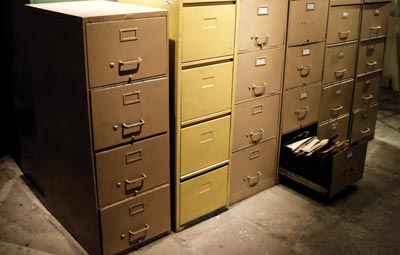
The abovementioned piece makes explicit the thesis of Art, not only as a concept that can be modified in time as per the requirements of the moment in question, but also as something understood individually. Luis sets up a computer connected to Internet, as well as a scanner and a book shelf with books related to Arts, publicity and design so that each person selects his/her definition, scan it and put in the web... This way, the accumulation of axioms only makes indetermination concrete.
However, he had made some inquiry on the subject, from a different angle, in that strange plastic action entitled “Fast Forward Spirit”; which was shot from an unusual perspective in his own house and it dealt with a conversation among colleagues taped interruptedly (to the point that the subject of the conversation is not known). It is an informal action that will lead to “Try or Tried”, where some young people address the camera to give 36 “mute” and somehow imposed answers to the same number of questions about Art (not published either). The intimate and natural acting in “Fast Forward Spirit” as well as the staging of “Try…” differ in the presentation and the meaning of the title, but they coincide in terms of relief and conclusions. Regardless of the fact that the former one warns about moving forward the spirit and the latter one is ironic about the slavery imposed to creators, tightened to certain definitions, for Luis Gomez profession in question does not have unchanging laws, not even the elementary ones, but they are a continuous change and an unlimited freedom to decode creative codes and their impact, to purify the artistic circuit and to widen its way ahead.
This lovely irreverent artist which is eminent by discarding what is superfluous to keep the minimum essence, has provided us, through symbols, with his reflections about his existence, wisdom and Art as a liberating human determination.
Havana, June 2010
Related Publications

How Harumi Yamaguchi invented the modern woman in Japan
March 16, 2022



